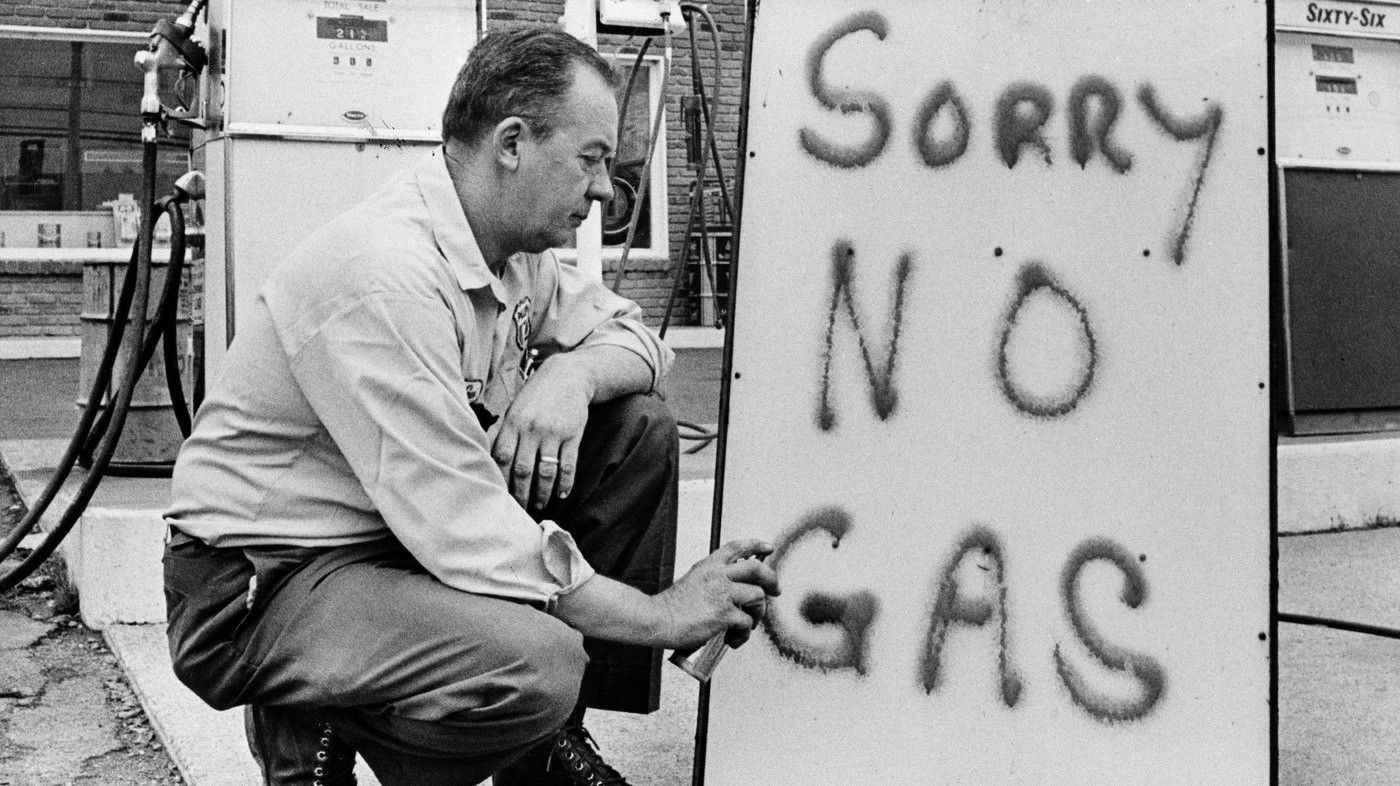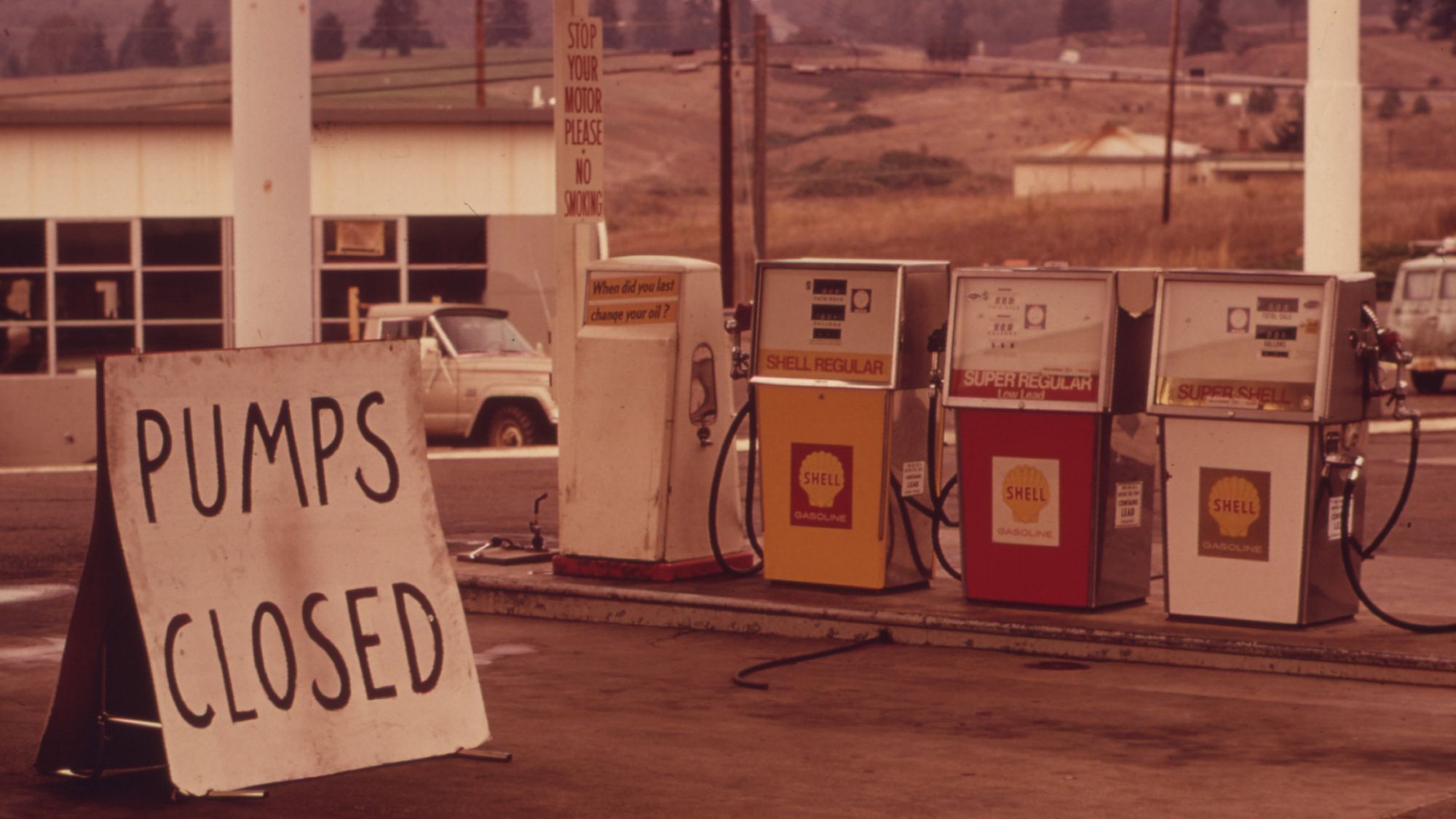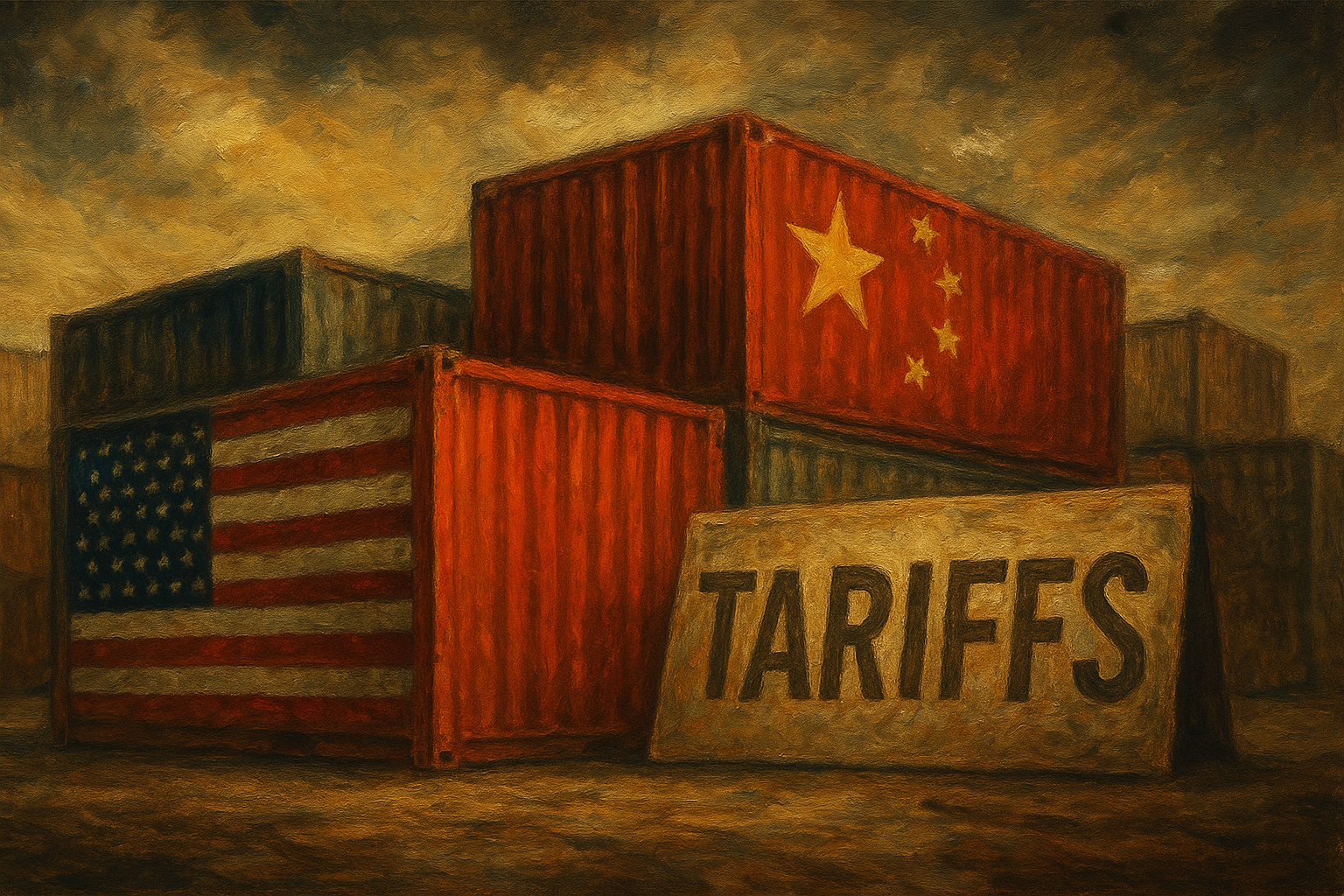New scientific research suggests that the world faces an imminent oil crunch, which will trigger another financial crisis.
A report by HSBC shows that contrary to the commonplace narrative in the industry, even amidst the glut of unconventional oil and gas, the vast bulk of the world’s oil production has already peaked and is now in decline; while European government scientists show that the value of energy produced by oil has declined by half within just the first 15 years of the 21st century.
The upshot? Welcome to a new age of permanent economic recession driven by ongoing dependence on dirty, expensive, difficult oil... unless we choose a fundamentally different path.
Last September, a few outlets were reporting the counterintuitive findings of a new HSBC research report on global oil supply. Unfortunately, the true implications of the HSBC report were largely misunderstood.
The HSBC research note — prepared for clients of the global bank — found that contrary to concerns about too much oil supply and insufficient demand, the situation was opposite: global oil supply will in coming years be insufficient to sustain rising demand.
Yet the full, striking import of the report, concerning the world’s permanent entry into a new age of global oil decline, was never really explained. The report didn’t just go against the grain that the most urgent concern is ‘peak demand’: it vindicated what is routinely lambasted by oil majors as a myth: peak oil — the concurrent peak and decline of global oil production.
The HSBC report you need to read, now
INSURGE intelligence obtained a copy of the report in December 2016, and for the first time we are exclusively publishing the entire report in the public interest.
Read and/or download the full HSBC report by clicking below:

Headquarted in London, UK, HSBC is the world’s sixth largest bank, holding assets of $2.67 trillion. So when they produce a research report for their clients, it would be wise to pay attention, and see what we can learn.
Among the report’s most shocking findings is that “81% of the world’s total liquids production is already in decline.”
Between 2016 and 2020, non-OPEC production will be flat due to declines in conventional oil production, even though OPEC will continue to increase production modestly. This means that by 2017, deliverable spare capacity could be as little as 1% of global oil demand.
This heightens the risk of a major global oil supply shock around 2018 which could “significantly affect oil prices.”
The report flatly asserts that peak demand (the idea that demand will stop growing leaving the world awash in too much supply), while certainly a relevant issue due to climate change agreements and disruptive trends in alternative technologies, is not the most imminent challenge:
“Even in a world of slower oil demand growth, we think the biggest long-term challenge is to offset declines in production from mature fields. The scale of this issue is such that in our view rather there could well be a global supply squeeze some time before we are realistically looking at global demand peaking.”

Under the current supply glut driven by rising unconventional production, falling oil prices have damaged industry profitability and led to dramatic cut backs in new investments in production. This, HSBC says, will exacerbate the likelihood of a global oil supply crunch from 2018 onwards.
Four Saudi Arabias, anyone?
The HSBC report examines two main datasets from the International Energy Agency and the University of Uppsala’s Global Energy Systems Programme in Sweden.
The latter, it should be noted, has consistently advocated a global peak oil scenario for many years — the HSBC report confirms the accuracy of this scenario, and shows that the IEA’s data supports it.
The rate and nature of new oil discoveries has declined dramatically over the last few decades, reaching almost negligible levels on a global scale, the report finds. Compare this to the report’s warning that just to keep production flat against increasing decline rates, the world will need to add four Saudi Arabia’s worth of production by 2040. North American production, despite remaining the most promising in terms of potential, will simply not be able to fill this gap.
Business Insider, the Telegraph and other outlets which covered the report last year acknowledged the supply gap, but failed to properly clarify that HSBC’s devastating findings basically forecast the longterm scarcity of cheap oil due to global peak oil, from 2018 to 2040.
The report revises the way it approaches the concept of peak oil — rather than forecasting it as a single global event, the report uses a disaggregated approach focusing on specific regions and producers. Under this analysis, 81% of the world’s oil supply has peaked in production and so now “is post-peak”.
Using a more restrictive definition puts the quantity of global oil that has peaked at 64%. But either way, well over half the world’s global oil supply consists of mature and declining fields whose production is inexorably and irreversibly decreasing:
“If we assumed a decline rate of 5%pa [per year] on global post-peak supply of 74mbd — which is by no means aggressive in our view — it would imply a fall in post-peak supply of c.38mbd by 2030 and c.52mbd out to 2040. In other words, the world would need to find over four times the size of Saudi Arabia just to keep supply flat, before demand growth is taken into account.”

What’s worse is that when demand growth is taken into account — and the report notes that even the most conservative projections forecast a rise in global oil demand by 2040 of more than 8mbd above that of 2015 — then even more oil would be needed to fill the coming supply gap.
But with new discoveries at an all time low and continuing to diminish, the implication is that oil can simply never fill this gap.
Technological innovation exacerbates the problem
Much trumpeted improvements in drilling rates and efficiency will not make things better, because they will only accelerate production in the short term while, therefore, more rapidly depleting existing reserves. In this case, the report concludes:
“… the decline-delaying techniques are only masking what could be significantly higher decline rates in the future.”
This does not mean that peak demand should be dismissed as a serious concern. As Michael Bradshaw, Professor of Global Energy at Warwick University’s Sloan Business School, told me for my previous VICE article, any return to higher oil prices will have major economic consequences.
The HSBC report takes the position that prices will have to rise eventually, because the drop in investment due to declining profitability amidst the current glut will make a supply squeeze inevitable. Better and more efficient drilling creates a glut now: but it also accelerates depletion, meaning that the lower prices and oil glut today is a precursor of tomorrow’s higher prices and supply squeeze.
There’s another possibility, which could mean that prices don’t rise as HSBC forecasts. In this scenario, the economy remains too weak to afford an oil price hike. Demand for oil stays low because economic activity remains tepid, while consumers and investors continue to seek out alternative energy sources to fossil fuels. In that case, the very inertia of a weakening economy would pre-empt the HSBC scenario, and the industry would continue to slowly crush itself out of the market due to declining profitability.
Price spikes, economic recession
But what if the HSBC supply forecast is correct?
Firstly, oil price spikes would have an immediate recessionary effect on the global economy, by amplifying inflation and leading to higher costs for social activity at all levels, driven by the higher underlying energy costs.
Secondly, even as spikes may temporarily return some oil companies to potential profitability, such higher oil prices will drive consumer incentives to transition to cheaper renewable energy technologies like solar and wind, which are already becoming cost-competitive with fossil fuels.
That means a global oil squeeze could end up having a dramatic impact on continued demand for oil, as twin crises of ‘peak oil’ and ‘peak demand’ end up intensifying and interacting in unfamiliar ways.

The demise of fossil fuels
The HSBC report’s specific forecasts of global oil supply and demand, which may or may not turn out to be accurate, are part of a wider story of global net energy decline.
A new scientific research paper authored by a team of European government scientists, published on Cornell University’s Arxiv website in October 2016, warns that the global economy has entered a new era of slow and declining growth. This is because the value of energy that can be produced from the world’s fossil fuel resource base is declining inexorably.
The paper – currently under review with an academic journal – was authored by Francesco Meneguzzo, Rosaria Ciriminna, Lorenzo Albanese, Mario Pagliaro, who collectively conduct research on climate change, energy, physics and materials science at the Italian National Research Council (CNR) — Italy’s premier government agency for scientific research.
According to HSBC, oil prices are likely to rise and stabilise for some time around the $75 per barrel mark due to the longer term decline in production relative to persistent demand. But the Italian scientists find that this is still too high to avoid destabilising recessionary effects on the economy.
The Italian study offers a new model combining “the competing dynamics of population and economic growth with oil supply and price,” with a view to evaluate the near-term consequences for global economic growth.
Data from the past 40 years shows that during economic recessions, the oil price tops $60 per barrel, but during economic growth remains below $40 a barrel. This means that prices above $60 will inevitably induce recession.
Therefore, the scientists conclude that to avoid recession, “the oil price should not exceed a threshold located somewhat between $40/b [per barrel] and $50/b, or possibly even lower.”
More broadly, the scientists show that there is a direct correlation between global population growth, economic growth and total energy consumption. As the latter has steadily increased, it has literally fueled the growth of global wealth.
But even so, the paper finds that the world is experiencing:
“… declining average EROIs [Energy Return on Investment] for all fossil fuels; with the EROI of oil having likely halved in the short course of the first 15 years of the 21st century.”

EROI is the total value of energy a resource can generate, calculated by comparing the quantity of energy extracted, to the quantity of energy put in to enable the extraction.
This means that overall, despite total liquids production increasing, as the energy value it generates is declining, the overall costs of extraction are simultaneously increasing.
This is acting as an increasing geophysical brake on global economic growth. And it means the more the economy remains dependent on fossil fuels, the more the economy is tied to the recessionary impact of global net energy decline:
“The chance of future economic growth matching the current trajectory of the human population is inextricably bound to the wide and growing availability of highly concentrated energy sources enjoying broad applicability to energy end uses.”
The problem is that since the 1980s, the share of oil in the global energy mix has declined. To make up for this, economic growth has increasingly had to rely on clever financial instruments based on debt: in effect, the world is borrowing from the future to sustain our present consumption levels.
In an interview, lead author Dr. Francesco Meneguzzo explained:
“Global conventional oil peaked around the year 2005. All the following supply increase was due to unconventional oil exploitation and, since 2009, basically to US shale (tight) oil, which in turn peaked around March, 2015.
What looks like to be even more important, anyway, is the fact that global oil supply has failed to keep the pace with the increase in total energy consumption, which ‘natural’ growth requires to be approximately proportional to population increase, leading to the decline of the oil share in the energy mix. While governments have struggled to fuel their economies with ever increasing energy supply, other sources have steadily replaced oil in the energy mix, such as coal in China. Yet, no other conventional source has proved to be a valuable substitute for oil, hence the need for debt in order to replace the vanishing oil share.”
On a business as usual trajectory, then, the economy can quite literally never recover — unless it transitions to a truly viable new energy source which can substitute for oil.
“In order to avoid the [oil] price affordable by the global economy falling below the extraction cost, debt piling (borrowing from the future) becomes a necessity, yet it is a mere trick to gain some time while hoping for something positive to happen,” said Meneguzzo. “The reality is that debt, basically as a subsitute for oil, does not work to produce real wealth, as apparent for example from the decline of the industry value added as a percentage of GDP.”
Where will this end up?
“Recently, debt has started shrinking, basically because it has failed to generate real wealth. Assuming no meaningful (and fast) transition to renewable energy, the economic growth can only deteriorate further and further.”
Basically, this means, Meneguzzo adds, “delocalizing manufacturing to economies using local, cheaper and dirtier energy sources (such as coal in China) as well as lower wages, further shrinking domestic aggregate demand and fueling a downward spiral of deflation and/or debt.”
Is there a way out? Not within the current trajectory: “Unless that debt is immediately used to exploit renewable sources on a massive scale, along with ‘accessories’ such as storage making them as qualified as oil, social and political derangements, even before an economic crash, look to be unavoidable.”

Crisis convergence
Seen in this broader scientific context, the HSBC global oil supply report provides quite stunning confirmation that for the most part, global oil production is already in post-peak. That much is incontrovertible, and derived from industry-validated data.
HSBC believes that after 2018, this is going to manifest in not simply a global supply shock, but a world in which cheap, high quality fossil fuels is increasingly hard to find.
We don’t need to accept this forecast dogmatically — the post-peak oil market, which HSBC confirms now exists, may function differently than what anyone can easily forecast.
But if HSBC’s forecast is accurate, here’s what it might mean. One possible scenario is that by 2018 or shortly thereafter, the world will face a similar convergence of global crises that occurred a decade earlier.
In this scenario, oil price hikes would have a recessionary affect that destabilises the global debt bubble, which for some years has been higher than pre-2008 crash levels, now at a record $152 trillion.
In 2008, oil price shocks played a key role in creating pre-crisis economic conditions for consumers in which rising living costs helped trigger debt-defaults in housing markets, which rapidly spiralled out of control.
In or shortly after 2018, economic and energy crisis convergence would drive global food prices up, re-generating the contours of the triple crunch we saw ravage the world from 2008 to 2011, the debilitating impacts of which we have yet to recover from.
2018 is likely to be crunch year for another reason. 1 January 2018 is the date when a host of new regulations are set to come in force, which will “constrain lending ability and prompt banks to only advance money to the best borrowers, which could accelerate bankruptcies worldwide,” according to Bloomberg. Other rules to come in play will require banks to stop using their own international risk assessment measures for derivatives trading.
Ironically, the introduction of similar well-intentioned regulation in January 2008 (through Basel II) laid the groundwork to rupture the global financial architecture, making it vulnerable to that year’s banking collapse.
In fact, two years earlier in July 2006, Dr David Martin, an expert on global finance, presciently forecast that Basel II would interact with the debt bubble to convert a collapse of the housing bubble into a global financial conflagaration.
Just a month after that prescient warning, I was told by a former senior Pentagon official with wide-ranging high-level access to the US military, intelligence and financial establishment that a global banking collapse was imminent, and would likely occur in 2008.
My source insisted that the event was bound up with the peak of global conventional oil production about two years earlier (which according to the UK’s former chief government scientist Sir David King did indeed occur around 2005, even though unconventional oil and gas production has offset the conventional decline so far).
Having first outlined my warning of a 2008 global banking collapse in August 2006, I re-articulated the warning in November 2007, citing Dr. Martin’s forecast and my own wider systems analysis at a lecture at Imperial College, London. In that lecture, I specifically predicted that a housing-triggered banking crisis would be sparked in the context of the new era of expensive fossil fuels.
I called it then, and I’m calling it now.
Some time after January 2018, we are seeing the probability of a new crisis convergence in global energy, economic and food systems, similar to what occurred in 2008.
In the end, I might be wrong. The crash might not happen in exactly 2018. It might happen later. Or it might be triggered by something else, something unexpected, that the model outlined here doesn’t capture.
The point of a forecast is not to be right — but to imagine a potential scenario based on the data available that one can reasonably prepare for; and to adjust the model accordingly in light of new data.
Whether or not a crash takes place in precisely the way suggested here, what’s clear from the new research is that the economy is hugely vulnerable to a financial crisis for reasons that conventional economists don’t talk about — reasons relating to the energy system on which the economy is fundamentally dependent.
Today, we are all supposed to quietly believe that the economy is in ‘recovery’, when in fact it is merely transitioning through a fundamental global systemic phase-shift in which the unsustainability of prevailing industrial structures are being increasingly laid bare.
The truth is that the cycles of protracted economic crisis are symptomatic of a deeper global systemic process.
One way we can brace ourselves for the next crash is to recognise it broadly for what it is: a symptom of global system failure, and therefore of the inevitable transition to a post-carbon, post-capitalist future.
The future we are stepping into simply doesn’t work the way we are accustomed to.
The old, industrial era rules for the dying age of energy and technological super-abundance must be re-written for a new era beyond fossil fuels, beyond endless growth at any environmental cost, beyond debt-driven finance.
This year, we can prepare for the post-2018 resurgence of crisis convergence by planting seeds — however small — for that future in our own lives, and with those around us, from our families, to our communities and wider societies.

This article was updated on 16 January 2017.









